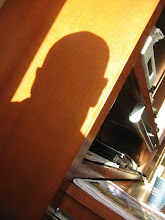
Got this from my Dad today. It reminds me of the composition I am still working on. When we went from Kansas to Oregon the I Ching read "Fire at the foot of the Mountain" - isn't that the truth?
"Dear ones:
Somewhere around the time that we bought the house in San Mateo and moved in there, I was pretty active in the San Francisco Art Directors Club, which I thought was something of a pinnacle of my career (never imagining that membership in any group is only that -- dues being up to date and all).
Someone decided that it was time for the kids of the art directors to show their stuff and have an exhibition. So, it came to pass that the three Hansen kids old enough to hold pencil, crayon, brush or whatever, did their thing. Dad got their finished works dry-mounted to cardboard and dutifully entered.
At the next meeting I was extremely pleased to find that each of you had won in your age categories. Mom and I were more than anxious to preserve the moment for later indulgence since about that same time, Laura Jane joined the family and other considerations began to take precedence.
So, some half-century later as I got deeper into the "downsizing" efforts in the basement, I found the treasure trove of collected drawings and paintings from the mid-forties and fifties safely ensconced in a large portfolio.
In each case, the paper had aged considerably and some of the edges were less than tidy, but the essence still comes through. We hope each of you enjoys a moment or two of reflection and find a little pleasure in these classics as we do. Consider this your Valentine!
Sending love -- Mom and Dad"









